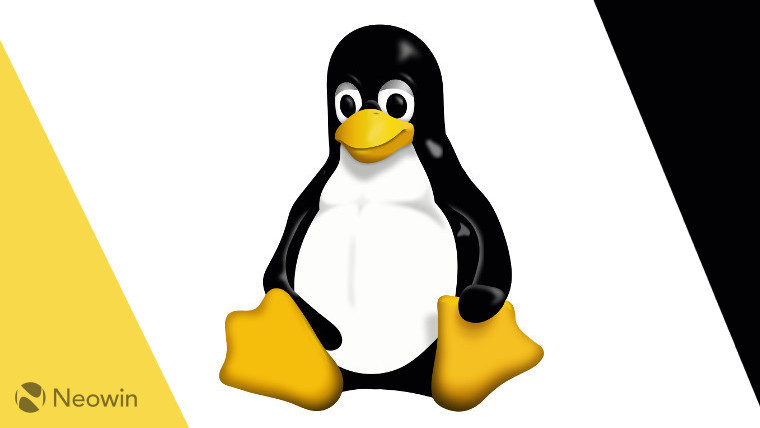Wait, isn’t RNDIS what’s used when you tether your Android’s connection via USB? Or am I mistaking it for something else?
Yes, and it’s still in new phones. They’re being disingenuous saying that it’s android phones don’t use it.
So I may not be able to use ADB and Fastboot anymore after I get the kernel update?
That’s different protocols. This is only about the one being used when you share your phone’s connection via USB (tethering). Neither adb nor fastboot make use of this.
Also, starting with Android 14, there should be an alternative available with NCM.
Well a14 is not that common but I’ve never heard of tethering before (except for WiFi tethering that improves connection) so I guess it’s not important.
It’s not about improving a connection, but making your phone’s network connection available to other devices. USB tethering creates a network device at
/dev/usb...that behaves like an any ordinary network device, allowing you to create a connection using it. Wi-Fi tethering creates a hotspot similar to what your router at home does.So now you can’t use USB hotspots on Linux? Yea mainstream has gone pretty evil then tbh. They didn’t even stop at the previous drama.
There’s no such thing as USB hotspots, that’s a term for WiFi. Also you can still use the NMC protocol if your Android version is recent enough. Just not RNDIS anymore. It’s an insecure Microsoft protocol, though this probably wouldn’t have mattered for a lot of people.
Yes, with the exception of some that switched to USB CDC NCM already. I seem to be lucky, the Pixel 6 is one of the first to have made the switch.
So if my mint install updates I won’t be able to use USB tethering? Is there a way to update my phone to use USB CDC NCM? Or would I have better luck recompiling my mint install to add the standard they just removed? I’m pretty new to Linux (literally made the switch last November) and I sadly have to use USB tethering when my ISP shits the bed with routing to the US
First you will have to find out about your specific phone model. It seems that different chipset vendors implement different things for tethering.
Someone in the raspberry pi forums checked what his Pi Zero was doing with
lsusb -tand someone in an old reddit thread checked hisdmesgwhile connecting the phone and turning on tethering, maybe you can try those things while tethering to see whether currently the RNDIS or the USB CDC driver gets loaded for your phone.Then we will have to see in which kernel version Greg’s change finally lands. At the earliest it will land in Kernel 6.14 because 6.13 is already on the fifth release candidate so new changes shouldn’t be added anymore. Then you have to find out when your Mint install will move to that kernel. If you are currently on Mint 22 Wilma (supported until 2029), then that’s based on Ubuntu 24.04 LTS, which is based on the Ubuntu LTS Kernel 6.8.
I’m guessing now, based on past regularities, that Mint 23 will be based on Ubuntu 26.04 LTS, and that Ubuntu will choose a fresh kernel for their LTS in the beginning of 2026, so probably one that will contain this change by Greg. So it seems to me, that if 1) your phone still needs RNDIS for tethering and 2) you still have that phone in the middle of 2026 and 3) you still have that Mint install you should probably not upgrade to Mint 23, but stay on Mint 22 until its support ends in 2029.
But projecting that far into the future is kind of difficult, maybe distro maintainers will reenable RNDIS if they see it’s still needed, or maybe a future Android Update will force OEMs to use USB CDC.
Why couldn’t the NDIS driver run in userspace?
What’s NDIS and what do you mean to run it in userspace? I am very new to Linux and am barely considered tech savvy so this is all going over my head
I just googled what a NDIS is and with my limited knowledge I think I understood what you’re saying. Are you saying that I could keep an older/custom version of NDIS running on my own user account instead of changing the entire kernel for me to be able to use USB CDC NCM to keep using USB tethering?
Yes you nailed it. No reason for kernel mode unless there are controlling lines needed that the user account is not able to change the signaling on (more rare), if it’s only data mode your user account should suffice.
Well, that’ll be a problem for anything that’s got crossplay between XP and Linux in a local environment.
someone using xp probably won’t mind using some outdated linux kernel as well
Much easier to get and install a copy of WinXP than old Linux.
Really? Just about every distro I know has an archive of past releases. With WinXP I wouldn’t know where to begin.
Completely incorrect. You can find old Debian releases here:
https://cdimage.debian.org/mirror/cdimage/archive/
That’s the official Debian site and contains releases going back to 2002. You can surely find older versions if you really want with a bit of effort beyond 2 minutes of searching that it took me to find this.
Linux just removed the support so any Linux distro available currently should still support it
Could probably be patched back in if you really need it or want it. Linux is open source after all.
Good on them, I guess.
This kind of thing can never be removed from Windows because somewhere there is a Fortune 500 company whose entire IT infrastructure is precariously balanced such that it relies on this obscure feature – or some other equally rickety legacy Win32/16 API crap – and if it ever goes away their business will collapse and they’ll sue Microsoft for a billion dollars.
deleted by creator
What are you talking about? Microsoft constatntly removes and adds features to their software and OS, no one can sue them for it.
Yeah, windows 10/11 has broken a ton of stuff. I have to use RS232 plugs for programming controllers at work, and I had to buy new usb-RS232 cables for all our computers because windows 11 broke support for all the older cables. I’ve also had a lot of programs break.
It’s really frustrating to be trying to troubleshoot if an old controller is working or not, and not know if you can’t connect to it because it’s fried or if some new windows update is preventing the connection/software from working.
Those cables more than likely were using clone chips and for whatever reason Microsoft decided to back completely banning them when identified.
You’ll probably know if your old one is a fake chip because it’ll say “not a prolific…” which isn’t just a reboot and edit to allow unsigned drivers, it’s dead.
What’s worse, it’s absolutely impossible to tell if the cable you bought has the fake chip since legitimate stores and legitimate cable makers bought them so the loser is people.
Works fine on Mac and Linux though. Naturally.
From what I’ve read, Microsoft just decided to drop support for the PL-2303HXA/ TA/TB/HXD/RA/SA/EA. Some people report that RA chipsets still work some of the time, but inconsistently.
You can also sometimes forcibly install old drivers, that will continue to work.
Ah sounds like two compounding issues then! I referenced this issue https://www.sleepyponylabs.com/blog/pl2303 since so many cables I had previously, even from the router and switch maker that came with the device, stopped working.
Great to know that there’s a whole other bunch of issues around these cables further making life tough for consumers.
All observable behaviors of your system will be depended on by somebody.
@cm0002 eh, does that mean I can’t anymore tweak my Lumia? Fuck (yes I still have a Lumia, even many years after their death, it is still my best phone, android can’t compete, an android, and I mean all of them, lags like hell on 2Gb RAM, the Lumia runs super smoothly with 1 Gb RAM)
android, and I mean all of them, lags like hell on 2Gb RAM
False. The key is the software you use. I use Lineage OS without Gapps, most apps from F-droid and my mid-range Samsung runs pretty smoothly with 2GB of RAM.
This. LineageOS on any device that supports it immediately improves said device x10.
I have an old as hell Galaxy tablet that had slowed down to a crawl after a few years. With LineageOS it’s usable again.
@specterspectre @michael_palmer can you find an official custom ROM of LineageOS for Nokia X or Alcatel Pixi 4 (4")?
https://wiki.lineageos.org/devices/ read on. Don’t start any process on any device without reading all the info and steps.
@specterspectre eh, I’m not a developer, plus, tuto like this takes time that I hardly find
@specterspectre plus, it doesn’t have any of the phones I own
@specterspectre @michael_palmer also Samsung Galaxy A70, however, it is critical that I don’t leave it unusable since it’s essential for my work
@specterspectre @michael_palmer or maybe a Huawei P5 pro
Unlikely, unless you tweak your Lumia that’s plugged into a windows system remotely from a Linux system
@cm0002 there’s another way: using a VM
Can’t you not run your android on 2gb of ram? 🙃 That’s such a weird complaint to be honest, how often did you tweak your lumia before, anyway?
So mamy cellular modems are going to break. That’s what you get for sticking to a shitty „standard” made by a corpo known from their shitty work.









